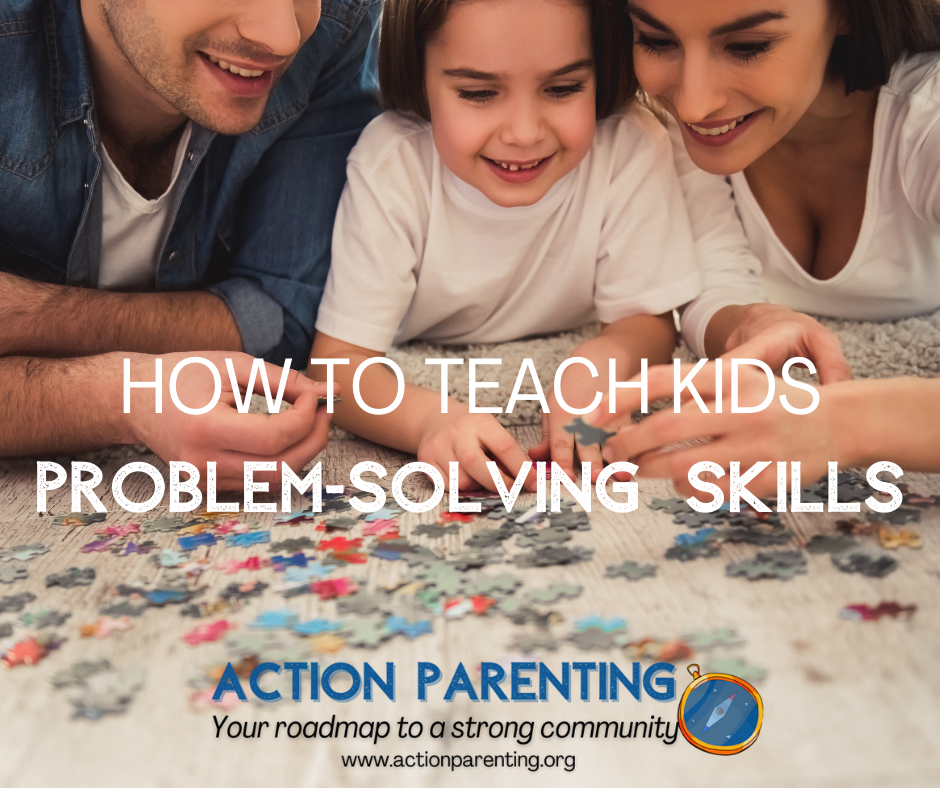Good problem-solving skills are not just for doing well on a math assignment. Every day we encounter big and small challenges that need to be solved. From negotiating a toy-conflict, deciding how to respond to someone’s unkind words, to managing disappointment when things change. Developing our children’s problem-solving skills can help them manage their own life more effectively.
Why Teach Kids Problem-Solving Skills?
Life is not always easy. Part of parenting is helping to equip our kids with the skills that help them keep going when they encounter a challenge. Children who have not learned how to approach a problem successfully can experience increased feelings of anxiety, impulsive behavior, and struggle to maintain healthy relationships. Instead of giving-up, getting frustrated, or avoiding challenges, kids with problem solving skills can better manage their emotions, think creatively, and persist through difficulty.

How to Teach Kids Problem-Solving Skills
Teaching problem solving skills isn’t a one time thing, it starts when kids are very young and continues to grow as kids get older. Here are some basic strategies to keep in mind for all ages.
1 – Wait! Don’t Solve the Problem for Them
A natural response when our child encounters a problem is to solve it for them. It comes from a healthy need to protect our children. However, we can step in too quickly and our children learn to depend on us whenever something feels hard or challenging. Ask yourself these questions to know when to step in and when to wait:
- Is my child in immediate danger?
- Is someone or something else in immediate danger?
If the answer to both questions is “no,” then it’s a great time to practice problem-solving skills.
2 – Acknowledge, Validate, and Process Emotions
Before we can address a problem from a rational, thinking mind, we must first acknowledge the emotions. Challenges can often trigger feelings of fight/flight/freeze. Start by naming and validating the emotions your child is feeling whether they are 2, 12, or 22 years old.
Then guide them to process the emotion. Do they need to find a calming space? Take three deep breaths? Punch a pillow? This step helps kids learn that emotions are not good or bad, they are our body’s response and we can listen to what our body is telling us.
3 – Ask, Don’t Tell
Helping kids learn to solve problems involves a lot of asking open ended questions. As adults, we easily see a solution to the problem. However kids are still learning. The best way to teach is to guide them through the process. Below are some question prompts you might use:
- What’s the problem?
- Why is that a problem?
- What are the solutions?
- Can you think of something that could help make it right?
- What do you need?
- What would happen if…?
- Is the solution safe and fair?
- How will it make others feel?
- How will it make you feel?
- Is there another solution?
- Which one will you try?
4 – Reflect on the Experience
After kids have made their decision and experienced the result, check-in. Whether it was positive or negative, talking about the process and the result is a great way to strengthen their skills. If it went well, talking about it highlights what worked. If it didn’t work, use it as a growth experience. Reflect on what they learned and consider what they might do differently. Here are some reflection questions:
- What worked?
- What didn’t work?
- What can you do differently next time?
Want more parenting tools and help?
Follow Action Parenting on Facebook or Instagram for more helpful tools on teaching problem-solving skills. And check out our online parenting classes where you can get more knowledge and tools to help bring more peace to your family.

